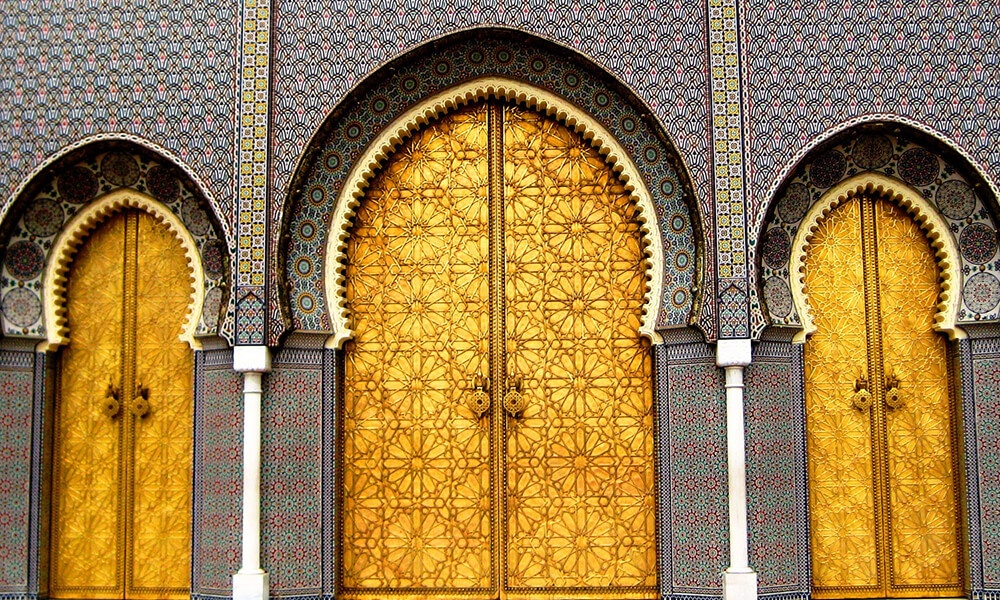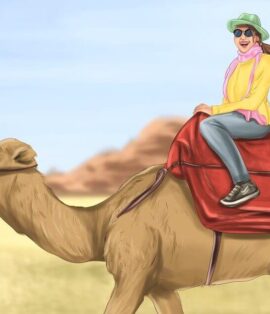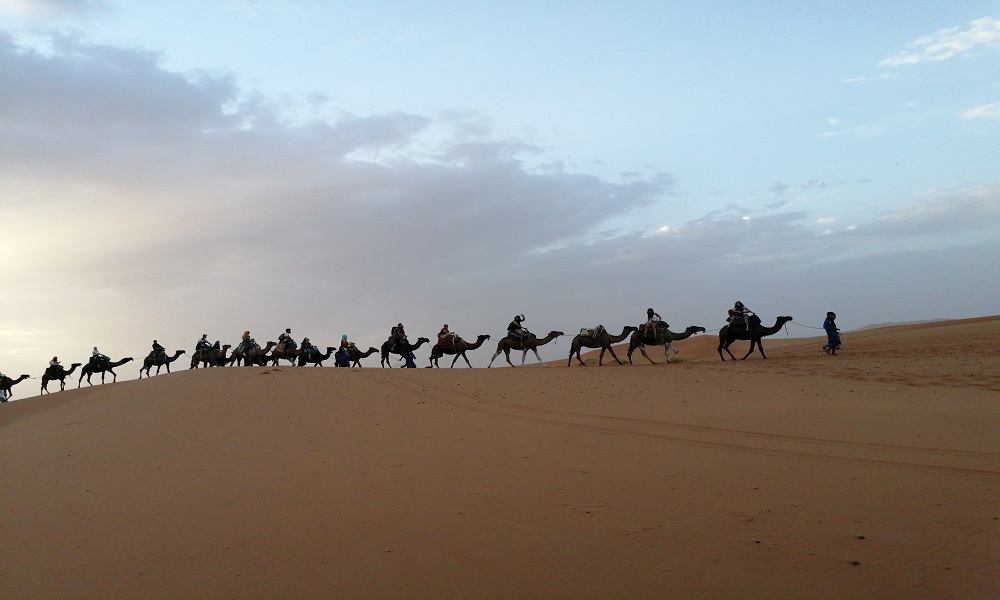What to Do in Marrakech?
Marrakech is possibly the most important and most visited of Morocco’s four former Imperial Cities – Fez, Meknes, Marrakech and Rabat. An area that has been inhabited since Neolithic times, it has been subject to very many cultural influences. The walls and buildings that were constructed using red sandstone during the 12th century have given the city the nickname of the ‘Red City’. Marrakech is a cultural, religious and trading hub of the Marrakech-Safi region, and the market centre Jemaa el-Fna is the busiest trading square in Africa. When you visit, you quickly realise just how much of a market city it is – it is noisy, busy, crowded and chaotic! As you walk through the medina – the central market area – you’ll see that everyone is trying to sell you something: food, clothes, carpets, spices, jewelry, henna tattoos, pictures with snake-charmers, magicians and acrobats! While it can be hectic, it is also one of the most fascinating, amazing and unique places to visit!
THINGS TO SEE AND DO
EXPLORE THE SOUKS
One of the best experiences when visiting the city is to wander around the local souks – the market stalls within the city where traditional craftsmen sell goods like carpets, jewellery, spices, lamps, pottery and more! Again, it can be a hectic experience! There is a lot of competition for traders and as you walk around, all of the vendors will try to get your attention. You do need to keep your wits about you (and have a bit of a sense of humour!) – Moroccan people are very friendly and welcoming, though, and as long as you are as careful as you would be in any other city, it will be a unique experience!
This central square is often called the ‘Heart of Marrakech’. It can be quieter during the heat of the daytime but, especially from evening time on, is almost like an outdoor theatre. It is full of snake-charmers, monkey-handlers, tattoo artists, musicians and other performers. There are also a lot of food stalls around, particularly at night. Again, it can be hectic and crowded and is usually filled with tourists. You do need to be aware that sometimes some of the vendors and performers can ‘aggressively’ try to sell goods, pictures and tattoos to tourists. As you are exploring, remember that it is ok to say ‘no’ and walk away from something you don’t want to buy! That said, it is one of the most amazing places you’ll ever visit!
MOROCCAN HAMMAM
A hammam is like a steam bath or spa popular in North Africa. They are usually found near mosques or toiletry shops and can be upscale or traditional. I would advise checking in before you visit to find out about the particular etiquette of the hammam. Public hammams cost around MAD 10, while hotel or more upscale ones can cost from MAD 300-500. You can also treat yourself with a massage or other body treatments with fragrant, locally sourced body oils and lotions!
The Bahia Palace took over fourteen years to build and has 150 rooms – however, only some of the palace is open to the public. It is definitely worth a visit and the stained-glass windows, painted tiles and ceilings and silk panels are breath-taking! There is also a beautiful courtyard garden that you can walk around. Best to arrive for your visit early or a little later in the afternoon – it will be less busy and easier to walk around if it is very hot! The entrance fee is MAD 10.
JARDIN MAJORELLE
This garden is a collection of a large variety of different species of plants from all around the world and was created by the French painter Jacques Majorelle in the late 19th – early 20th century. It is a bit of an oasis away from the business of the city and provides a lot of great photo opportunities! There is a café there, also a gift/craft store and a Berber Museum which is particularly interesting. You can also purchase, as part of your entrance fee, a ticket to the Yves Saint Laurent Museum which is just around the corner. Anyone with an interest in fashion and popular culture will appreciate this. Even without a particular interest in design it is a historical journey and worth a visit.
These are tombs that date back to the time of the Saadian dynasty in Morocco, the late 16th century. They are located on the south side of the Kasbah Mosque. There is some beautiful, ancient architecture decorated with intricate, traditional tiling. It is an open-air museum and nice to walk around – there are local guides outside who will offer to give you a tour. It might be worth, in this case, paying for a guide. There is no written information inside – so while it is lovely to have a wander, if you want to know the history of the tombs a guide might be a good idea! The entry fee is MAD 10.
PLACES TO STAY
HOSTELS
Hostels are reasonably priced – dorm rooms start around MAD 60 per night and private rooms start around MAD 180. They usually offer free breakfast, WiFi, towels and linens. There are usually also communal spaces so that you can meet up with and talk to other travellers.
HOTELS
Budget hotels start at around MAD 150 per night for a room that sleeps two people, with a private bathroom, WiFi and breakfast included. There are also very many higher-end places to stay, all-inclusive luxury hotels and some quite exclusive golf-resorts just outside the city. There is something to suit every budget!
RIADS
A riad is a traditional Moroccan home that has been converted into a guest-house. They are usually arranged around a central courtyard and many of them have small pools or fountains in the centre and/or a roof terrace. They usually provide breakfast, private bathrooms, Wifi, towels, linens, etc. and are a unique experience when staying in Morocco. Some riads offer other services, e.g. cookery courses, city tour-guides, etc. and some will provide dinner in the evening on request. Like hotels, there are riads in Marrakech to suit every budget.
WHERE TO EAT
Food can be cheap in Marrakech if you eat at the street stalls and local restaurants, especially in the main square. You can get authentic food and meals (Moroccan pancakes, pastries, pastillas, tagines and fish dishes) from street vendors from MAD 30. Café Atlas and Le Jardin provide traditional and western food that is reasonably priced and very delicious! Café Clock is a happening spot that provides good, traditional food and a variety of traditional entertainment as well (story-telling, music and dancing). Dishes start around MAD 15 and go up to around MAD 30.
GETTING AROUND
It is very possible to walk around the medina in Marrakech but it can be confusing and, depending on the time of year, very hot!










Comments are closed